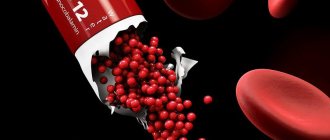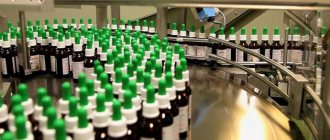Vitamin E (tocopherol) is a fat-soluble vitamin that is an important antioxidant.
In nature, vitamin E exists as a mixture of four structural isomers of tocopherols and four corresponding tocotrienols, which differ in biological activity and functions performed in the body.
4 tocopherols (α-, β-, γ-, δ-) and 4 tocotrienols (α-, β-, γ-, δ-), which are isomers of vitamin E and between which there is antagonism (!)
All isomers (vitamers) of vitamin E have DIFFERENT antioxidant and biological activities.
Tocotrienols differ from tocopherols in that they carry three unsaturated bonds in the isoprene tail of the molecule, making them 40-60 times more effective antioxidants.
Vitamin E dissolves and remains in the fatty tissues of the body, thereby reducing the need for large amounts of the vitamin. Signs of fat-soluble vitamin deficiency do not appear immediately, making it difficult to diagnose.
How much vitamin E is in food?
Herbal products (100 g)
| Product | mg |
| Wheat germ oil | 215,4 |
| Sunflower oil | 55,8 |
| Almond oil | 39,2 |
| Sunflower seeds | 35,2 |
| Almond | 26,2 |
| Hazelnut | 26 |
| Walnut and hazelnut | 22 |
| Sunflower halva | 14 |
| Peanut | 9 |
| Wheat flour, 2nd grade | 4 |
| Green pea | 3,6 |
| Oats, cocoa | 3 |
| Celery | 2,5 |
| Corn | 2,0 |
| Apple | 0,7 |
| Carrot | 0,6 |
| Bananas | 0,45 |
| Tomatoes | 0,3 |
Animal products (100 gr)
| Product | mg |
| Cod liver | 45-60 |
| Cod meat | 24-63 |
| Mackerel liver | 43 |
| Mackerel meat | 31 |
| Flounder meat | 25 |
| Peled meat | 22-24 |
| Herring meat | 14 |
| Chicken fat | 11,3 |
| Chicken egg yolk | 5,6 |
| Butter | 1,57 |
| Chicken liver | 1,2 |
| Chicken heart | 0,76 |
| Russian cheese | 0,56 |
| Meat | 0,5 |
| Sour cream | 0,48 |
| Chicken leg meat | 0,2 |
| Chicken breast meat | 0,133 |
| Milk | 0,06 |
Consumption rate and requirement of vitamin E
In Europe and the USA, the recommended daily dose of vitamin E is 30 mg; in Russia, an adequate dose of vitamin E is 10 mg. While 30 mg of vitamin E is sufficient to prevent vitamin deficiency in healthy people, it does not take into account environmental factors that may increase the body's need for vitamin E.
Numerous clinical studies and epidemiological data have shown that the intake of vitamin E in our conditions should be significantly higher. For those aged 50 years and older, it is recommended to take 400 mg of vitamin E per day.
The benefits and harms of vitamin E
Until recently, only beneficial properties were attributed to vitamin E. He was almost awarded the title of “Vitamin of Youth.” And suddenly we hear - vitamin E does not cure heart disease, vitamin E can cause cancer.
There is still no consensus on the true healing properties of this vitamin. Scientists are continuously studying its effect on the human body and periodically “delight” us with contradictory results and conclusions.
Is vitamin E harmful or beneficial?
Benefits of Vitamin E
Thanks to its antioxidant properties, vitamin E can reduce the risk of heart and vascular diseases by more than 35%. It is able to cleanse and protect the body from free radicals, which destroy our health and cause premature aging.
In older people, the body's resistance to various infectious diseases decreases, and taking vitamin E improves immunity, helps the muscular and nervous systems work properly, and protects blood vessels.
Clinical trial results also showed that taking 2,000 IU of synthetic vitamin E slowed the progression of Alzheimer's disease symptoms by 34%.
A major scientific study in 1998 found that vitamin E reduces the risk of prostate cancer in men by 32%, and also protects our lungs to some extent.
Harm of vitamin E
The results of scientific studies conducted among smokers have established that vitamin E tablets do not reduce, but on the contrary, increase their risk of developing CVD (cardiovascular diseases). So for those who smoke and eat fatty foods, taking this wonderful vitamin will not help.
In addition, vitamin E has been found to be contraindicated in those taking anti-clotting medications, blood pressure medications, and aspirin, as vitamin E may enhance their effects.
Still, for preventive purposes, taking vitamin E is advisable. Unfortunately, those who already have heart disease will not benefit from additional intake of this antioxidant. It would be naive to expect an effect from a substance that is not a medicine.
The natural form of vitamin E is most effective.
There are 8 forms of this vitamin found in nature, and the most active of them is D-alpha tocopherol. It is best absorbed by the human body and protects the heart, slows the development of Alzheimer's disease, and reduces the risk of stroke and heart attack.
Enrich your diet with natural sources of vitamin E. After all, this vitamin is best absorbed from natural products, such as:
- Olive oil.
- Nuts.
- Eggs.
- Avocado.
- Fatty fish such as sardines and salmon.
The discovery of vitamin E occurred back in 1922 by Herbert Evans. In his experiments on laboratory rats, the scientist, studying the properties of whole milk, found that despite good growth and development, adult female rats became infertile on such a diet. Adding various components to the diet, including vitamins A, B, C and D, known at that time, did not lead to the restoration of reproductive function.
At the same time, adding lettuce or wheat germ oil to the food quickly restored the ability to reproduce. Thus, a certain substance “X” was isolated, which was called the “vitamin of the reproductive system.” In 1931, scientists Mattill and Olcott described the antioxidant function of the vitamin, and in 1938 they managed to synthesize it and begin medical use.
Vitamin E
Vitamin E belongs to the group of fat-soluble vitamins, the class of tocopherols and tocotrienols. At the dawn of its use, it was used exclusively to support the reproductive system and was actively prescribed by obstetricians and gynecologists to many women, mainly pregnant women. The belief in the exceptional effectiveness of the vitamin for maintaining the reproductive system is so ingrained in the consciousness of the medical community that even the lack of convincing evidence in this direction and the presence of a significant number of side effects does not stop the widespread use of the drug.
It should be noted that many side effects are more typical for the synthetic form of the vitamin. It, unlike natural, contains various spatial isomers of tocopherol, which are not found in living nature. These isomers are characterized by reduced biological activity and cause most of the side effects of the drug.
Properties
Currently, the antioxidant properties of tocopherols have been widely studied. And although science knows much stronger antioxidants, vitamin E still stands out for some. This is primarily due to the fact that natural tocopherol isomers not only neutralize free radicals in body fluids and environments, but also actively protect the cell membrane from damage.
Their position in the cell membrane allows them to actively prevent the oxidation of unsaturated membrane lipids. In addition, the vitamin actively protects the SH groups of cell membrane proteins from damage. Thanks to its combined action with ascorbic acid and selenium, it activates enzymatic antioxidant protection.
The drug has the ability to stabilize the mitochondrial membrane and thereby reduce oxygen consumption by cells. This effect is enhanced by participation in the synthesis of ubiquinone, the main antioxidant of mitochondria. Oxidized tocopherol, interacting with ascorbic acid, goes into a reduced form, resuming its activity.
The effect of vitamin E on the elasticity of the red blood cell membrane has been revealed. This allows red blood cells to pass unhindered in the smallest vessels without sticking together or damaging the vascular wall. This property allows not only to ensure a more efficient function of red blood cells in the transport of oxygen and carbon dioxide, but also serves as the prevention of various thrombotic complications (vascular thrombosis of the extremities, strokes, heart attacks).
Tocopherols and tocotrienols are also necessary to ensure growth and regeneration of the body, development of muscles, nervous system, liver and other organs. Interestingly, up to 90% of vitamin E is concentrated in adipose tissue. In this case, alpha-tocopherol gradually turns into gamma-tocopherol. This process can take up to two years.
Sources
Since natural vitamin E is synthesized only by plants, its main source is plant products. Vegetable oils contain the most tocopherols, the champion among which is wheat germ oil and the wheat germ itself. A tablespoon of this oil contains a daily dose of vitamin E.
Soybean, sunflower, olive, rapeseed and other oils are also rich in it. It is absorbed along the same path that fat is absorbed, that is, through the lymphatic system, after preliminary exposure to bile acids, entering directly into the blood. Knowing this fact, it is easy to explain vitamin E hypovitaminosis in individuals following low-fat diets or consuming insufficient amounts of plant foods.
Action
Research conducted on the principles of evidence-based medicine over the past two decades has made some adjustments to the understanding of the role of vitamin E in the body:
- there is no clear evidence of the positive effect of additional tocopherol intake on the course of cardiovascular diseases. In women over 45 years of age, some positive effect was noted in the form of a slight reduction in mortality from these diseases;
- a decrease in the incidence of prostate cancer in men who smoke was noted;
- a decrease in the incidence of age-related changes in the retina was revealed when taken together with ascorbic acid, beta-carotene, zinc and selenium;
- a decrease in the incidence of obstructive pulmonary diseases was revealed in women over 45 years of age;
- There was a decrease in the incidence of certain types of cancer with long-term use of vitamin E (in particular bladder cancer);
- In pregnant women, an increased risk of complications in the fetus was identified (risk of stillbirth, prematurity, heart defects).
- long-term use in combination with vitamin C can increase the number of hemorrhages due to the effect on the blood coagulation system;
Read more: All about biotin, a complete review of vitamin B7
Many scientists argue that the negative aspects of taking vitamin E are due to the effects of its synthetic isomers, which are not found in nature and are not characteristic of natural forms. An example of a great product that contains a natural form of d-alpha tocopherol is Vitamin E from Myprotein.
Dosage
Regarding the determination of the daily dosage: 1 mg of alpha-tocopherol is equal to 2.2 IU of synthetic forms and 1.49 IU of natural forms. According to modern concepts, to eliminate signs of vitamin deficiency, it is enough to take 15-30 IU per day. However, such a dosage may not be enough in conditions accompanied by low absorption of the vitamin or increased needs for it.
Taking into account the above material, it is easy to provide a list of indications for additional use of the drug:
- premature newborns (due to imperfections in the absorption process and increased needs as a result of accelerated growth);
- people with various digestive disorders;
- people with poor diets (lack of plant foods, fasting, low-fat diets);
- people leading an active lifestyle (high metabolic rate);
- children under 12 years of age (active growth and high nutritional needs).
Given that vitamin E is fat-soluble, it is advisable to take it with a meal containing fat in the first half of the day. Before taking it, you should consult a specialist.
Our body is a complex biological system that maintains its integrity and vitality with the help of many necessary components. We all know that we need proteins, fats, carbohydrates, minerals and vitamins. Today we will talk about one of the vitamins. We will look at vitamin E, find out how useful it is and what it is needed for, and read the instructions for its use.
Vitamin E as an antioxidant
Vitamin E is an important component of the “single antioxidant complex” – the body’s antioxidant defense system.
Vitamin E can serve as an antioxidant:
- primary trap of free radicals – neutralizes primary radicals, turning into tocopherylquinone (stable radical);
- secondary free radical trap – binds radicals of lipid molecules, breaking the chain reaction of radical oxidation of lipid molecules in membranes.
Antioxidant properties of vitamin E
- Vitamin E donates an electron, but remains stable when interacting with radicals.
- Vitamin C, retinol, ubiquinone and other antioxidants - restore oxidized vitamin E and increase its content in the blood.
- Tocotrienols are 40-60 times more effective than tocopherols as antioxidants.
- The proxidant effect of high doses of tocopherol is noted.
- During lipid oxidation, α-tocopherol is oxidized first and only then γ- and δ-
- Vitamin E slows down the oxidative breakdown of PUFAs, carotenoids and vitamin A, and the formation of vitamin A increases.
- Increases glutathione peroxidase activity, independent of selenium.
- Inhibits lipid peroxidation in the elderly (200 mg).
- Reduces oxidative activity in chronic obstructive pulmonary disease.
Antioxidant cost
Despite the enormous benefits for the body and wonderful properties, tocopherol is a fairly affordable drug.
The price of vitamin E depends on the form of release, but it is definitely not exorbitant.
In addition, domestic drugs are much cheaper than foreign ones, and their quality meets all requirements.
When starting treatment or caring for your appearance with the help of the “youth and beauty” vitamin, you must first consult with a doctor (cosmetologist).
This is necessary to avoid the unpleasant consequences of thoughtless use, as well as to prevent the occurrence of side effects.
Effect of vitamin E
Vitamin E and reproductive support in women and men:
- “Antisterile vitamin” - ensures egg implantation, normal development of pregnancy and lactation, enhances the effect of progesterone.
- Enhances the effect of estrogens, which is important for estrogen deficiency and during menopause.
- Prevents spontaneous abortions (together with progesterone).
- Prevents male sterility, improves spermatogenesis, inhibits the degradation of the testes.
- Impotence and impaired spermatogenesis – 100-300 mg.
- Increases testosterone and corticosterone levels.
- Menopausal disorders – 100 mg x 3.
- Endometriosis – 800 mg.
- Dysmenorrhea – 100-200 mg.
- Threat of abortion – 100-150 mg.
Vitamin E and Support Muscle Function:
- Deficiency causes hypotonia and muscle weakness, fatigue, muscular dystrophy develops, with muscle degeneration, fibrosis, lipomatosis and creatinuria, and a decrease in the content of actin and actomyosin in the muscles.
- Helps with progressive muscular dystrophy, dermatomyositis - high doses of vitamin E.
- Increases glycogen content in muscle tissue - important for sports.
- Increases physical endurance.
Vitamin E and vascular health support:
- Improves main blood flow in thrombophlebitis, leg ulcers, gangrene, obliterating endarteritis - 400-600 mg.
- Improves peripheral blood supply, promotes new formation of blood vessels.
- Improves the elasticity of arteries by 37-44% (400 mg 8 weeks).
- Prevents hemolysis of red blood cells - stabilizes capillaries, preventing impaired vascular permeability and tissue edema.
- Prevents hemolytic anemia.
- Increases the level of hemoglobin and reculocytes in premature infants.
- α- and γ-tocopherols (more strongly), as well as oxidized forms of vitamin E, reduce platelet aggregation and reduce the risk of thrombosis.
- Increases the formation of nitric oxide in the vascular wall, which reduces vascular spasm and blood pressure.
Vitamin E and Nervous System Support:
- With severe vitamin E deficiency, cerebellar dysfunction, ataxia, peripheral polyneuropathy, and axonal degeneration develop.
- Helps with fibromyalgia, relieves leg cramps (together with vitamin C).
- Positive effect on overwork (100 mg), depression, fatigue, headaches.
- Stress – 200 mg x 2.
- Alzheimer's disease, senile dementia – 1500-2000 mg.
Vitamin E and normalization of fat metabolism - antiatherogenic effect:
- Normalizes fat metabolism, reduces the accumulation of lipofuscin in tissues.
- Reduces cholesterol levels.
- Tocotrienols suppress cholesterol synthesis by inhibiting the activity of the key enzyme HMG reductase.
- Slows down the process of atherogenesis (400 mg or more).
- Vitamin E at a dose of 200-400 mg significantly reduces the sensitivity of LDL and HDL to oxidation.
- Reduces fat oxidation (LDL), reduces the risk of atherosclerosis (400 mg).
- The presence of vitamin E in endothelial cells reduces LDL oxidation.
- Vitamin E more effectively protects LDL from oxidation when combined with vitamin C and β-carotene.
- Reduces thrombin formation, reducing blood viscosity and the risk of atherogenase.
- α-tocopherol inhibits the proliferation of smooth muscle cells in the vessel wall, reducing the risk of atherogenesis. Other tocopherols and tocotrienols have the same effect, with the exception of β-tocopherol (10% activity).
- Reduces the level of C-reactive protein, a marker of inflammation.
- Prevents fatty liver, toxic effects of CCl4 and cirrhosis, together with sulfur-containing amino acids.
Vitamin E and Heart Health Support:
- Deficiency causes myocardial dystrophy and impairs conductivity.
- Reduces the risk of caronaropathy (antioxidant effect).
Vitamin E and Immune Support:
- Immunostimulating and corrective action.
- Strengthens humoral anti-infective immunity.
- Administration of 800 mg of vitamin E increases cellular immunity in the elderly.
- Increases the production of IL 2, activates the proliferation of T- and B-lymphocytes.
- Increases the number of T-helpers.
- Increases antibody production.
- Protects the membranes of immune system cells from oxidative damage. HIGH doses cause immunosuppression.
- DEFICIT: Reduced antibody production and T-lymphocyte production.
Vitamin E and Eye Health Support:
- Low or insufficient vitamin E intake contributes to the development of age-related retinal dystrophy (ARD).
- Prescribing at least 10-20 mg reduces the risk of VDS and protects membranes (AREDS program).
- Reduces capillary fragility, the risk of retinal hemorrhage, improves microcirculation, reducing blood viscosity.
- Reduces the risk of developing cataracts (100-400 mg).
- Improves the functioning of the eye muscles, preventing muscle weakness and myodystrophy, reduces paresis of the eye muscles
- Prevents retinopathy in newborns (damage to the retinal arteries due to oxygen toxicity).
- Prevents scleroderma.
Anticarcinogenic effect of vitamin E:
- Vitamin E can influence the expression of genes that regulate proliferation and differentiation.
- Regulates apoptosis during carcinogenesis and aging.
- Suppresses the mutagenic and carcinogenic activity of aflatoxins and benzopyrene by increasing the rate of formation of glucuronides.
- Taking 800 mg of vitamin E (and 1.0 g of vitamin C) reduces DNA damage in blood lymphocytes.
- Tocopherols and tocotrienols induce apoptosis of breast cancer cells, and α-tocopherol induces apoptosis of prostate cancer cells, but without affecting normal cells (in culture).
- Inhibits the development of prostate cancer (risk ratio (RR) 0.76).
- Regular supplemental vitamin E intake for 10 years reduced the risk of bladder cancer.
- Reduces the risk of colorectal cancer, the effect depends on the dose of vitamin E.
- Reduces the risk of developing (RR 0.74) cancer of the oral cavity and pharynx and the risk of developing (RR 0.59) adenocarcinoma of the stomach.
- Administration of 400 mg of a-tocopherol significantly (45%) reduces the activity of ornithine decarboxylase in the stomach (a marker of the risk of stomach cancer).
- A high intake of vitamin E in combination with carotenoids, vitamins A and C is associated with a low risk of cancer of the oral cavity, pharynx, and stomach.
Vitamin E and Connective Tissue Support:
- Promotes the regeneration of connective tissue - collagenosis, osteoarthritis, rheumatoid arthritis.
What are the benefits of taking vitamin E capsules?
Tocopherol is an active derivative of tocol that has the properties of binding with other vitamins, enhancing immunostimulating and radioprotective functions.
The daily dosage of this microelement is 0.5 mg/kg of body weight for children and 0.3 mg/kg for adults. The constant replenishment of reserves of such an important vitamin is due to the daily loss by the body of up to 70% of the substance received from food or in capsule form. To ensure the health benefits of vitamin E, you need to include foods high in tocopherol in your diet:
- nuts;
- sunflower seeds, sesame seeds;
- vegetable oils;
- green vegetables;
- milk and eggs;
- beef liver.
It is very difficult to gain the required amount of IU - international units - based on proper nutrition. Therefore, taking tocopherol capsules daily will fill the need and protect the immune system. What are the benefits of vitamin E capsules:
- Stimulates the body's defenses.
- In combination with ascorbic acid, it is a protector against cancer cells.
- Suspends biological aging processes.
- Increases oxygen consumption by tissues.
- Necessary for skeletal muscle tone.
- Increases tissue regeneration abilities.
- Gives strength and vigor for the whole day.
- Reduces spasms of blood vessels and muscles.
- Age-related diseases - cataracts, the appearance of age spots - recede in people with a sufficient supply of vitamin E.
- Necessary as a means of preventing high blood pressure and ischemia.
- for conception and gestation of the fetus for expectant mothers and babies.
Benefits of vitamin for women
The origin of the name tocopherol comes from the Greek phrase “brings a fourth descendant,” so its importance is enormous for the effective functioning of a woman’s reproductive system. Vitamin E has a positive effect on normalizing metabolic processes and regulating hormonal levels during PMS. Taking an additional 500–600 IU of tocopherol during “critical days” eliminates the symptoms:
- irritability;
- increased sensitivity of the breast;
- swelling;
- lethargy and apathy;
- increased appetite.
Vitamin E is useful for maintaining beautiful skin and hair. Research by scientists has shown that this trace element preserves the integrity of cells and tissues, preventing oxidation of the cell membrane. The result is the tone of the subcutaneous muscles and the absence of wrinkles. Taking 400 IU will replenish vital energy reserves and eliminate the feeling of apathy and weakness.
- Cystitis - symptoms in women, first signs of the disease
- Cod baked in the oven - recipes with photos
- Brewer's yeast for weight gain
Vitamin E helps a woman's body reduce the risk of developing heart disease. By normalizing blood clotting, stopping the development of atherosclerosis, it prevents the formation of cholesterol plaques. The antioxidant properties of tocopherol prevent toxins from damaging healthy cells of the body and prevent the occurrence of cancer.
Effectively protects the skin from the negative effects of UV radiation, being the main component of sunscreen creams. Vitamin E normalizes the retinol ratio in the body, maintaining the balance of this trace element. A combination, for example, of fish oil with vitamin E, protects the female body from the development of cataracts, improves vision, and gives the skin a healthy color.
Beneficial properties for men
Vitamin E is vital for the male body. Convulsions and muscle dystrophy, decreased potency and cardiovascular diseases are an incomplete list of reasons to take tocopherol. Being the “engine” of sexual function, it ensures the production of active sperm, without which a woman’s chances of becoming pregnant are reduced several times.
The daily requirement of the male body with a balanced diet is 10 mg/kg body weight. Being at risk from 35 to 60 years of age for coronary disease, vitamin E helps men dissolve blood clots and blood clots and improves the delivery of oxygen to the walls of the arteries. Improving blood circulation is also beneficial for the pelvic organs, increasing potency and prolonging men's health.
Vitamin E during pregnancy
The most important function of vitamin E on the body is reproductive. When planning a pregnancy, multivitamin complexes containing this microelement become a mandatory drug to take. Pregnant women need to replenish vitamin E reserves daily, because more than 35% of the received norm is “used” for the formation and development of the body of the unborn baby.
Tocopherol performs the following “tasks” in the body of a pregnant woman:
- Improves blood supply to the pelvic organs.
- Corrects hormonal changes, normalizing the latter.
- Reduces the likelihood of placental abruption, promoting its maturation and functioning.
- Relieves spasms and cramps.
- Increases tone.
Receiving vitamin E from the expectant mother, the baby accumulates reserves in the liver, adrenal glands, muscles and heart. The beneficial properties of tocopherol will prevent the development of intrauterine pathologies: hemorrhage, changes in the nervous system. A deficiency in the body of a pregnant woman threatens the development of hemolytic jaundice of newborns and problems with the circulatory system.
- How to treat gout on the big toe: a remedy for inflammation of the joint
- How to drink apple cider vinegar for weight loss correctly
- Sauerkraut cabbage soup: recipes with photos
For hair and facial skin
Vitamin E is an indispensable component of most anti-aging creams, serums, and lotions. The property of maintaining water balance, protecting skin cells from the effects of toxins, prevents the formation of wrinkles, smoothes the skin. Taking the capsules orally stimulates the membrane-protective effect of cells, keeping the subcutaneous tissue toned and prolonging youth.
Antioxidant properties of vitamin E for healthy scalp and hair. The most modern cosmetology products are not able to restore the radiant shine and strength of the hair if it is lacking. The human body does not produce the latter, receiving the required amount from food, supplementing the need by taking capsules or tablets.
Increased blood circulation in the scalp as a result of taking tocopherol eliminates dandruff, stimulates hair growth, and protects against hair loss. Applying hair masks containing this microelement gives wavy, curly hair elasticity, elasticity, and eliminates split ends and fragility. As an ultraviolet protector, hair vitamin E protects your locks from fading.
Effects of Vitamin E
- Increases the biosynthesis of vitamin D (increases the activity of vitamin D biosynthesis enzymes) – SYNERGY in relation to vitamin D.
- Regulates the production of hormones of the anterior pituitary gland.
- Regulates energy metabolism and ATP biosynthesis, increasing the biosynthesis of coenzyme Q10.
- Suppresses lipoxygenase and cyclooxygenase pathways of arachidonic acid oxidation (synthesis of proinflammatory prostaglandins and leukotrienes).
- Reduces the activity of phospholipase and cyclooxygenase - inhibition of inflammation and the formation of prostaglandin E2.
- Slows down protein catabolism (breakdown) during aging.
- Restores cell sensitivity to insulin in type 2 diabetes.
- Increases thyroid hormone production
Prescribing vitamin E in large doses is appropriate for burns, ulcers, and radiation.
Programs to improve the condition of skin and hair – 100 mg x 2
Diets aimed at reducing body weight – 200 mg x 2
Vitamin overdose
Despite the enormous benefits of the drug, the dosage of vitamin E must be strictly observed in accordance with the instructions. This antioxidant tends to accumulate in the human body, and its excess is excreted.
Therefore, inappropriate use of the drug, constant slight excess of the permissible dose can lead to a deterioration in health:
- headache;
- weakness;
- vomiting, nausea, diarrhea;
- muscle pain;
- failure in hormone synthesis;
- changes in the functioning of the central nervous system;
- decreased calcium levels;
- iron deficiency;
- deficiency of vitamins A, K, D;
- pathologies of intrauterine development (in case of overdose during pregnancy).
If you use cosmetics containing the antioxidant in question too often, local allergic reactions, irritation, dry skin, and hair loss may occur.
When consuming vitamin E in any form, you must follow the frequency of use and dosage indicated by the doctor and the manufacturer.
Effective doses of vitamin E
| Clinical situation | mg/day |
| Premature babies (blood content – 3.5 mg/100 ml) | 25 |
| Liver diseases, rheumatoid arthritis, injuries | 30-100 |
| Skin diseases | 50-100 |
| For diseases of the neuromuscular system – 1-2 months. | |
| The “pharmacological” dose is effective | 100 |
| Cervical dysplasia | |
| When diagnosing IHD | 100-400 |
| Healthy for fatigue and insomnia | 100-200 |
| For impotence and impaired spermatogenesis – 1 month. | 100-300 |
| Protection of membranes from lipid peroxidation (1.5-5.0 mg/kg) | 105-350 |
| Threatened abortion – 7-10 days | 100-150 |
| Disorder of intrauterine development | |
| Dysmenorrhea | 150-200 |
| Non-insulin dependent diabetes mellitus | 200-400 |
| Increased resistance of LDL to oxidation | 400 |
| Slowing down atherogenesis (minimum dose) | 400 |
| Improves blood flow in peripheral vessels | 400-600 |
| Pathological menopause | 800 |
| Endometriosis | 400-800 |
| Alzheimer's disease, senile dementia | 1500-2000 |
| Well tolerated when taken orally | 3200 |
Indications for use of vitamin E
- Vitamin E deficiency – 100% of the population (100 mg).
- Old age with its problems - 100% of elderly people (400 mg).
- Antioxidant deficiency – 100% of the population (100 mg x 3)
- Hypotrophy in children and adults (50 mg / 200 mg)
- Muscle problems: muscular dystrophy, post-traumatic myopathy // amyotrophic syndrome // diseases of muscles, ligaments and joints
- Sports – high physical activity (400 mg) // increasing physical endurance
- Reproductive dysfunction: infertility in women and men // threat of miscarriage (100-150 mg)
- Menstrual irregularities (400 mg) // menopausal autonomic disorders (100 mg x 3)
- Neurological problems: neurasthenia due to overwork, asthenic syndrome // epilepsy // leg cramps
- Overwork (100 mg) // stress (200 mg x 2)
- Heart problems: myocardial dystrophy, cardiomyopathy (100-400 mg)
- Fat metabolism disorders: atherosclerosis (400 mg)
- Skin problems: dermatoses, eczema // psoriasis // herpes, ulcers, wounds, lichen // skin care (100 mg x 2)
- Eye health problems: retinal dystrophy, cataracts (100-400 mg)
- Vascular disorders: peripheral vasospasm (400-600 mg), hypertension
- Prevention of oncology: cancer of the prostate, stomach, colon, bladder
And all this is vitamin E!
Vitamin E deficiency
A person does not receive enough vitamin E from food.
Vitamin E deficiency does not manifest itself in any way. Therefore, vitamin E deficiency in adults occurs quite rarely and is usually caused by impaired fat absorption.”
“Symptoms of vitamin E deficiency are very rare; they can only develop with severe deficiency.”
Manifestations of severe vitamin E deficiency:
- When vitamin E deficiency is combined with diabetes mellitus, neurological symptoms develop: cerebellar ataxia, peripheral neuropathy, etc.
- Fibromyalgia, skeletal muscle and myocardial degeneration, cardiomyopathy, myocardial infarction.
- Development of severe atherosclerosis, premature aging.
- Myopathy, decreased muscle glycogen, increased creatinine in urine.
- Retinopathy, development of retinal dystrophy.
- Deterioration of immunity.
- Hemolytic anemia in premature newborns, hemolysis of erythrocytes with increasing consumption of PUFAs.
Beneficial features
✅Antioxidant
What does vitamin E do in your body? Performing the function of antioxidant, it actively protects cell membranes (shells) from destruction and stabilizes its functioning.
✅Reproductive system
Vitamin E is more involved in hormonal processes than others. Based on experience with rats, we can say with 100% certainty that if a woman does not have this vitamin in her body, it becomes impossible to get pregnant.
✅Vascular health
It has been noted that vitamin E has a positive effect on the elasticity of the membrane of erythrocytes (red blood cells). Thanks to this, even in the thinnest vessels, red blood cells do not stick together and do not damage the vessel walls.
Application strategy and safety of vitamin E
- Vitamin E must be taken daily as part of a multivitamin (“Super Complex” - 30 mg).
- If necessary (according to indications), it is necessary to additionally take vitamin E in the form of a single drug (“Vitamin E” - 100 mg).
- There should be a LOT of vitamin E - the need for it is high
Vitamin E safety
Toxicity threshold:
- Tocopherol is not toxic in normal doses taken with food.
- Toxicity is low, does not exhibit mutagenicity, teratogenicity and carcinogenicity when administered orally - up to 3.0 g per day.
- A slight risk of overdose occurs when taking vitamin E at a dose of 3200 mg per day.
Dangers of high doses of vitamin E:
- Large doses in premature infants (100-200 mg/kg) – risk of sepsis, NEC and hemorrhage.
- Risk of bleeding disorders due to vitamin K deficiency.
Be healthy!
Recommendations of Ph.D. nutritionist Yury Aleksandrovich Lysikov
You can listen to the full recording of the material on the topic “The Importance of Vitamin E for Health” below:
Directions for use and doses
You can apply cosmetic products to the skin in the eye area only along massage lines, gently tapping with your fingers.
Massage lines along which cosmetics are applied
The easiest way to buy vitamin E is in capsules. After piercing the capsule with a needle, you need to pour the oil into a clean plate. After washing your hands with your fingertips, apply a tocopherol solution to the skin in the eye area. After ten minutes, remove the product with a cosmetic napkin. Thus, you can take care of the dermis no more than twice a week.
It is allowed to add a drop of tocopherol solution to the cream or mask that a woman uses for skin care. The main thing is that this cosmetic product does not contain vitamin E.
A huge number of women choose Librederm antioxidant cream to care for the delicate skin around the eyes. It contains vitamin E and actively fights the appearance of age-related changes, tones, tightens, moisturizes and nourishes the skin around the eyes. Librederm cream also helps girls cope with such problems as the appearance of black circles under the eyes, saturate the epidermis with vitamins and smooth out facial wrinkles.
There are a huge number of homemade recipes with tocopherol that help care for the skin around the eyes:
- You need to heat a tablespoon of almond oil, add half a raw chicken egg yolk and a dessert spoon of vitamin E. The resulting composition is applied to the skin for twenty minutes, then carefully removed with a cosmetic napkin.
- In the summer, you can prepare a mask from parsley. To do this, crumble it until the juice begins to stand out and it reaches the consistency of porridge. This mass will require a tablespoon. You need to add the contents of a couple of vitamin E capsules to it. The mask is left on the skin for fifteen minutes, after which it is carefully washed off.
- A facial mask is often made based on glycerin and tocopherol. You will need a teaspoon of glycerin, a vitamin E capsule and a chicken egg yolk. All ingredients are thoroughly mixed so that the consistency becomes homogeneous. Apply the resulting mask to damp skin around the eyes for fifteen minutes. Remove any remaining cosmetic product with a cotton pad soaked in warm water or rinse your face with warm, purified water. It is best to do this procedure a few hours before bed, so that in the morning there is no swelling and black circles under the eyes.











